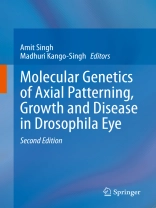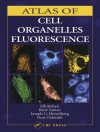Drosophila melanogaster (fruit fly) is a highly versatile model with a genetic legacy of more than a century. It provides powerful genetic, cellular, biochemical and molecular biology tools to address many questions extending from basic biology to human diseases. One of the most important questions in biology is how a multi-cellular organism develops from a single-celled embryo. The discovery of the genes responsible for pattern formation has helped refine this question and has led to other questions, such as the role of various genetic and cell biological pathways in regulating the process of pattern formation and growth during organogenesis. The Drosophila eye model has been extensively used to study molecular genetic mechanisms involved in patterning and growth. Since the genetic machinery involved in the Drosophila eye is similar to humans, it has been used to model human diseases and homology to eyes in other taxa.
This updated second edition covers current progress in the study of molecular genetic mechanisms of pattern formation, mutations in axial patterning, genetic regulation of growth, and more using the Drosophila eye as a model.Inhoudsopgave
Early eye development: Specification and Determination.- Generation of third dimension: Axial patterning in the developing Drosophila eye.- Catching the Next Wave: Patterning of the Drosophila eye by the Morphogenetic Furrow.- Ghost in the Machine- the Peripodail Epithelium.- Cell Polarity in Drosophila Retina.- Negative regulation for neural patterning in the Drosophila eye.- Adhesion and the cytoskeleton in the Drosophila pupaleye.- Drosophila eye as a model to study regulation of growth control: The discovery of size control pathways.- Drosophila cancer modeling using the eye imaginal discs.- Recent contributions of the Drosophila eye to unraveling the basis of neurodegeneration.- Genetic regulation of early eye development in non-dipteran insects.- Eyes for an eye: A comparative account on compound eye of Drosophila melanogaster with vertebrate eye.- Index.
Over de auteur
Dr. Amit Singh, a tenured Professor at the University of Dayton, is a
Drosophila geneticist who works in the area of early eye patterning and
Drosophila melanogaster (a.k.a. fruit fly) eye model to study Alzheimer’s disease and related dementias. Dr. Singh received his Ph.D. in the field of patterning and growth using
Drosophila model at D. A. University, Indore, India. After a short stint in the field of Trangenics of silkworm,
Bombyx mori, in the Indian Institute of Sciences (IISc.), Bangalore, India, Dr. Singh moved to Academic Sinica, Taipei, Taiwan to pursue his postdoctoral research in the field of eye development using
Drosophila melanogaster model system. In 2002, Dr. Singh moved to Baylor College of Medicine, Houston, Texas to further pursue his work on
Drosophila eye development and was promoted to an instructor (non-tenure track faculty) position in 2004. Dr. Singh was hired at University of Dayton astenure track assistant professor in 2007 and promoted to Professor (tenured) in 2018. To date, he has served as an editor on Volume I of this book, 5 Book chapters and 61 papers including reviews and research papers.
Dr. Madhuri Kango-Singh, is a tenured Associate Professor in the Department of Biology at University of Dayton (OH). Dr. Kango-Singh works in the area of growth regulation and cancer using genetic approaches in Drosophila. Dr. Kango-Singh completed her Ph.D. in growth regulation in Drosophila from D.A. University Indore (India). Between 1997-2002 Dr. Kango-Singh pursued postdoctoral research at Indian Institute of Science, Bangalore (India) and Academia Sinica, Taiwan in the areas of silkworm and Drosophila development. In 2002, Dr. Kango-Singh joined The University of Texas M D Anderson Cancer Center as a postdoctoral fellow and later as an Instructor to work on growth regulatory pathways in Drosophila where she played a key role in the identification of key components of the Hippo pathway. In 2007 Dr. Kango-Singh joined the Basic Sciences Division at Mercer University School of Medicine as a Tenure-Track Assistant Professor. In 2009, Dr. Kango-Singh moved as an Assistant Professor (Tenure-track) to the University of Dayton where she was promoted to Associate Professor with Tenure in 2015.












